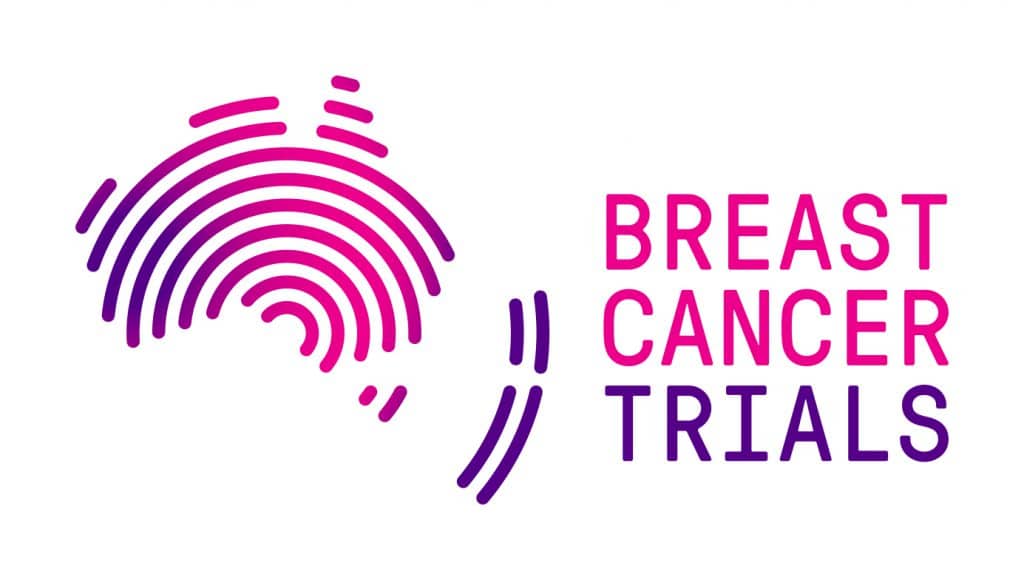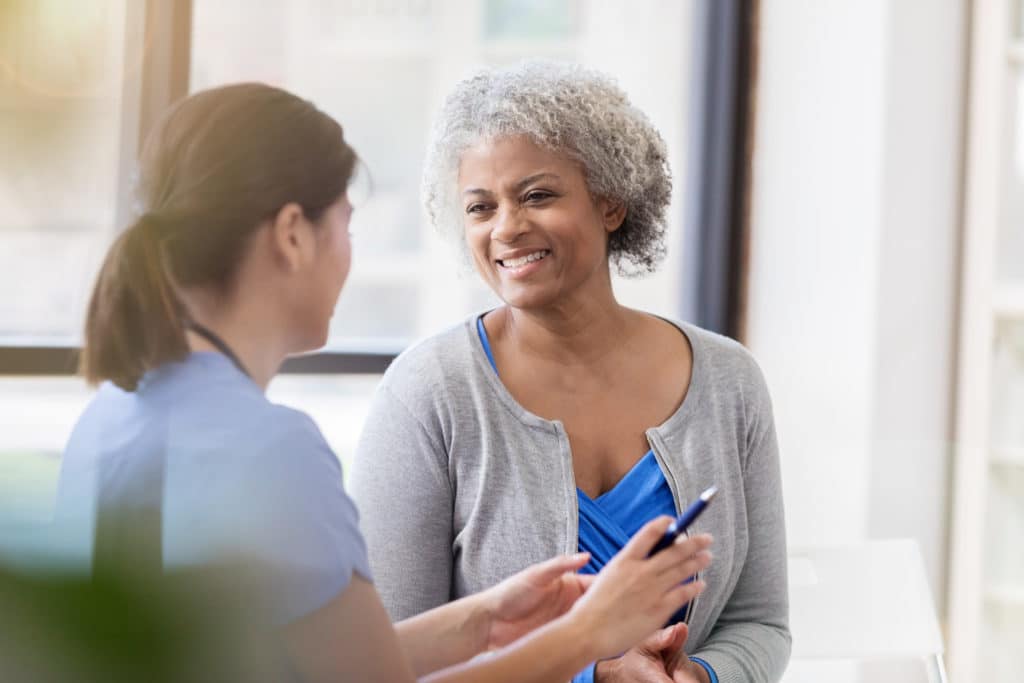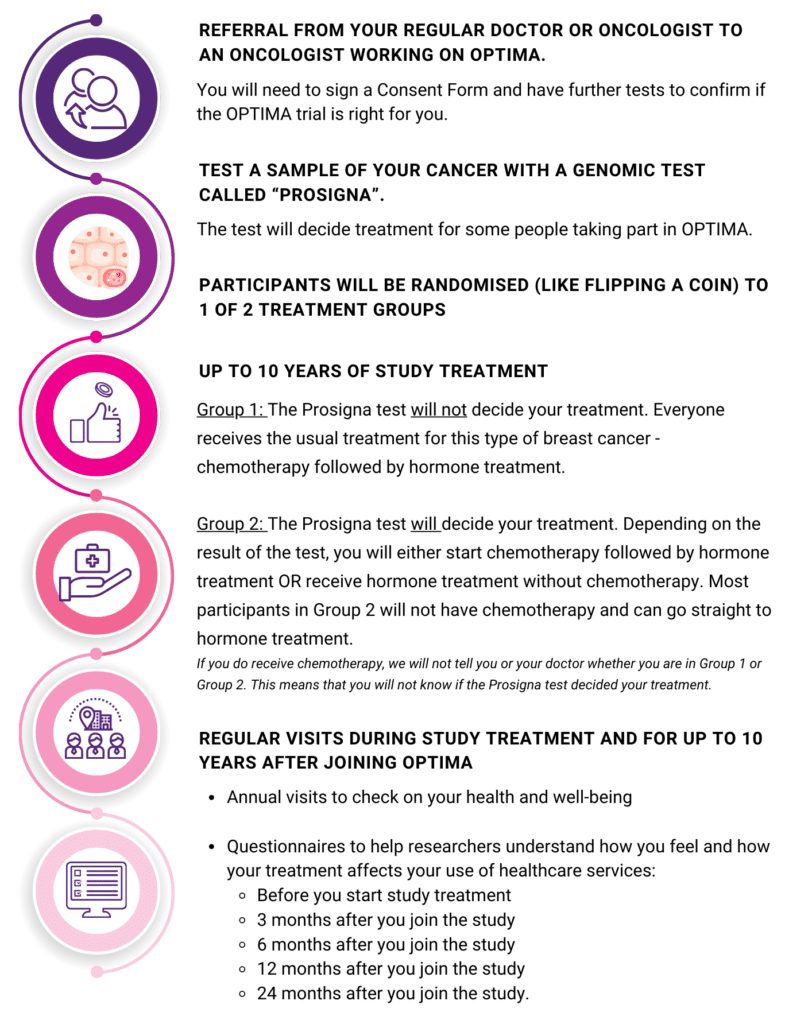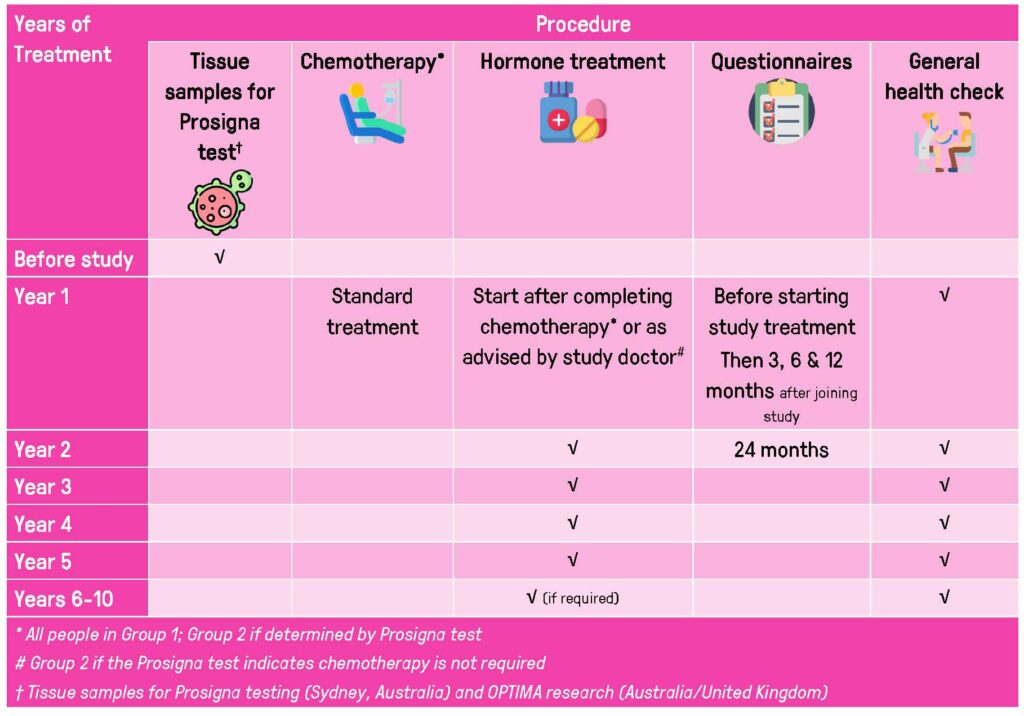- Research
- 2022-2026 Research Strategy
- Open Clinical Trials
- Closed Clinical Trials
- What is a Clinical Trial?
- Why Participate in a Clinical Trial
- Research Achievements
- Publications
- Research Development and Funding
- Participating Intitutions
- International Collaboration
- BCT Trials & Projects Summary
- Translational Research
- Clinical Fellowship Program
- International Fellowship Support
- Annual Scientific Meeting
- Travel Grants and Awards
- About
- Our Impact
- Fundraise
- Donate
- Researcher Login
- Cart
WHO CAN TAKE PART IN OPTIMA?
OPTIMA may be right for you if you are a man or a woman, aged 40 years and over, and you have breast cancer that is hormone sensitive (oestrogen (ER) positive) and HER2 negative, and:
- Has spread to the lymph nodes, OR
- Is a larger size cancer without spread to the lymph nodes within or surrounding the breast.
WHAT DOES TAKING PART IN OPTIMA INVOLVE?
Once you have had the final visit at 10 years after starting the study, you will have completed the study. Your Study Doctor will discuss your ongoing care with you at that time.
OPTIMA Trial Procedures
OPTIMA Tissue Banking – an optional part of the study
Tissue Banking is a common part of many clinical trials, including OPTIMA. Tissue banking is donating any tumour tissue or blood samples left over after testing for OPTIMA to a specific Tissue Bank for use in future research. The samples in OPTIMA will be stored at a Tissue Bank in Newcastle, NSW, Australia. The Tissue Bank must ensure proper standards are met in storing and managing your samples. Any future new studies that use your samples must have appropriate approvals in place (e.g. from a Human Research Ethics Committee) before your samples can be used.
IF YOU THINK THE OPTIMA TRIAL MIGHT BE RIGHT FOR YOU …
Please speak to your regular doctor or oncologist about a referral to a participating site.
You can give your doctor/oncologist the link to the trial page for further information.



